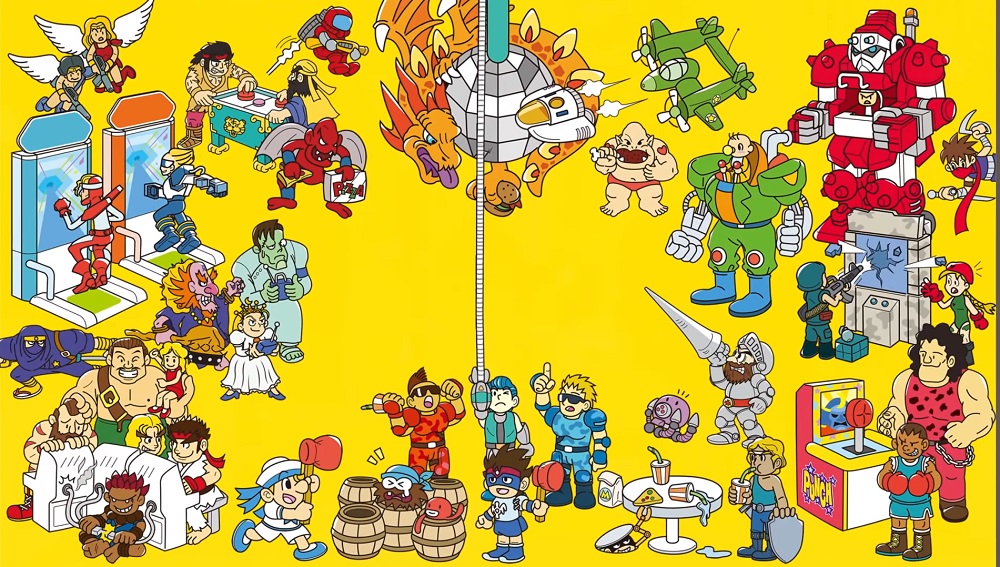TL;DR
Capcom Arcade Stadium brings 32 classic arcade titles, primarily from the 90s, to modern consoles, with the free base game including *1943: The Battle for Midway*. It offers customizable difficulty, speed, and unlimited virtual credits, preserving original ROMs with their quirks, but skips online multiplayer. While a nostalgic treat for retro fans, its dated gameplay might not appeal to everyone. Read the full review to see if this blast from the past is for you!
The allure of retro gaming remains strong. The generation that grew up alongside the advent of computer and video games (those born in the 70s) has matured into parents and middle-aged adults. The appeal of nostalgia, of revisiting the experiences of childhood and youth, is undeniable. While not all classic games have aged gracefully, certain arcade titles within Capcom Arcade Stadium continue to provide compelling gameplay experiences, even 20-35 years after their initial release. Access to such a varied collection of these titles has never been easier.
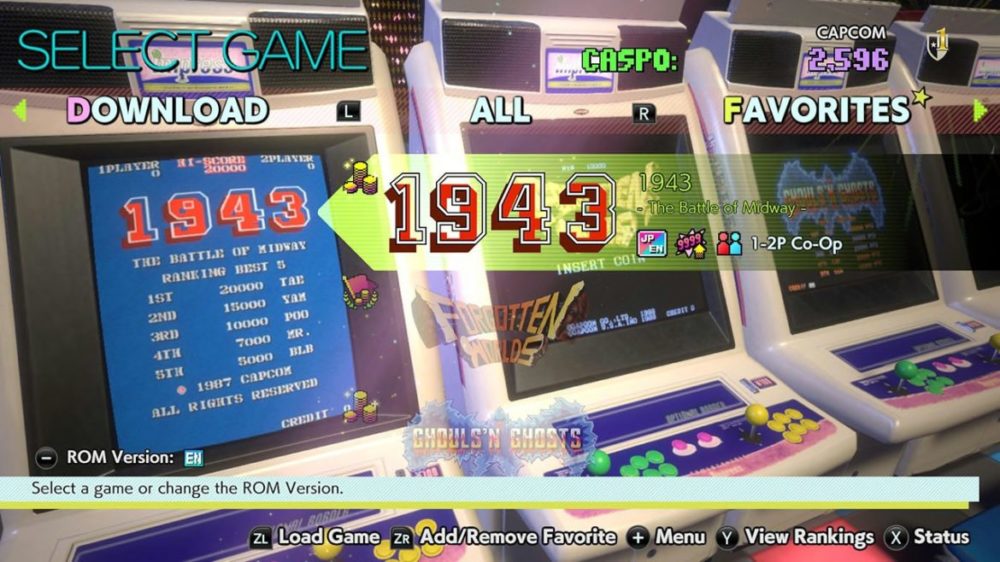
Capcom Arcade Stadium serves as a portal to Capcom’s arcade legacy, primarily showcasing titles from the 90s, with some inclusions from the late 80s and early 2000s. The free base program includes 1943: The Battle for Midway (1987) at no additional cost. Previously, Capcom licensed several titles to Koch Media, resulting in the Capcom Home Arcade, a dedicated hardware unit featuring 16 classic games. While the Capcom Home Arcade did not receive further official releases, Capcom Arcade Stadium expands the available library to 32 titles and is currently available for Nintendo Switch. Ports for PS4, Xbox One, and PC are planned, though release dates remain unspecified. Individual games can be purchased for 40 SEK each, themed bundles of ten games for 150 SEK, or the entire collection for 400 SEK. This represents a cost-effective method of acquiring licensed versions of these classics. Furthermore, Capcom has included several enhancements: the ability to insert unlimited virtual credits, and the option to select between the American and Japanese ROM versions of each game. Certain titles are exclusive to the Japanese ROM, and the ROM versions may contain subtle regional variations detailed within the game descriptions (e.g., sound differences, level details).
The games in Capcom Arcade Stadium
1943: The Battle of Midway (1987) (free)
“Dawn of the Arcade” (1984–1988):
Vulgus (1984)
Pirate Ship Higemaru (1984)
1942 (1984)
Commando (1985)
Section Z (1985)
Trojan (1986)
Legendary Wings (1986)
Bionic Commando (1987)
Forgotten Worlds (1988)
Ghouls ‘n Ghosts (1988)
+
Ghosts ‘n Goblins (1985) (bonus)
“Arcade Revolution” (1989–1992):
Strider (1989)
Dynasty Wars (1989)
Final Fight (1989)
1941: Counter Attack (1990)
Mercs (1990)
Mega Twins (1990)
Carrier Air Wing (1990)
Street Fighter II (1991)
Captain Commando (1991)
Varth: Operation Thunderstorm (1992)
“Arcade Evolution” (1992–2001):
Warriors of Fate (1992)
Street Fighter II Turbo: Hyper Fighting (1992)
Super Street Fighter II Turbo (1994)
Armored Warriors (1994)
Cyberbots: Full Metal Madness (1995)
19XX: The War Against Destiny (1995)
Battle Circuit (1997)
Giga Wing (1999)
1944: The Loop Master (2000)
Progear (2001)
The selection features a diverse library of games. Those familiar with the Amiga and Atari platforms may recognize many of these titles, particularly from the Dawn of the Arcade and Arcade Revolution collections, which Ocean and U.S. Gold attempted to port to 16-bit home computer formats with varying degrees of success. The difficulty level can be adjusted across eight increments, ranging from very easy to extremely challenging. Players can also modify the game speed and their character’s strength – options unavailable in the original arcade releases, where the design incentivized continued coin insertion. All games incorporate a “pay-to-win” mechanic, allowing unlimited virtual continues. Save and rewind functionality is also present, a common feature in retro game collections. However, using these features will disqualify high scores from online leaderboards.
Several games stand out as highlights within the collection. Battle Circuit remains a compelling side-scrolling beat’em-up with enduring humor. The bullet hell classics Giga Wing and Progear offer intense shooting experiences. Super Street Fighter II Turbo, ubiquitous across retro collections, makes its return. Personal favorites such as Mega Twins, Final Fight, and the unique platformer Strider also warrant attention. Street Fighter 2 appears in three slightly different iterations, and while the 19xx games share similarities, each provides a distinct gameplay experience.
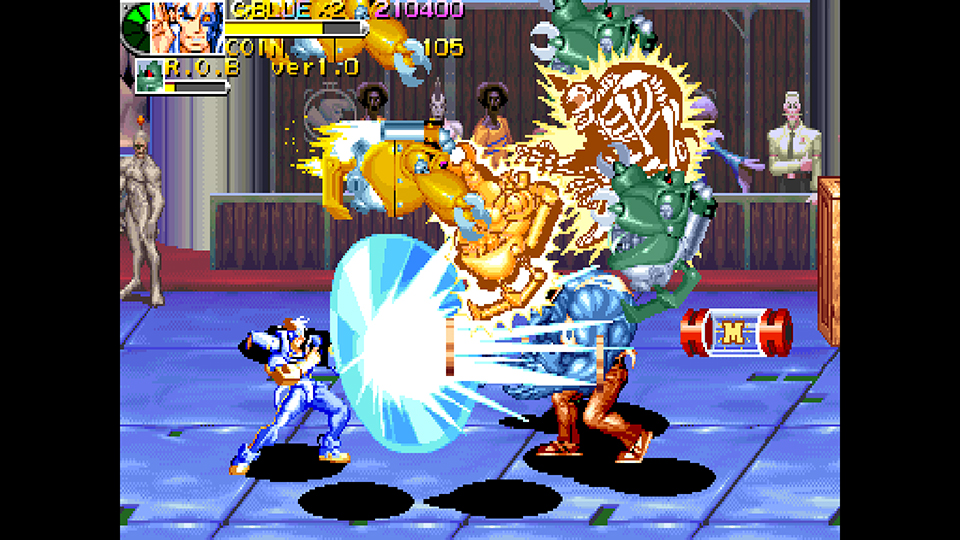
The Nintendo Switch hardware handles this collection of classics without issue, unsurprising given that the original arcade hardware utilized comparatively primitive processing power. The developers opted to emulate the original ROMs precisely, preserving original characteristics, including frame drops, slowdowns, and graphical anomalies. This decision has both advantages and disadvantages. While purists may appreciate the accuracy, the inclusion of dated technical limitations detracts from the experience, especially compared to modern restorations that address such issues, similar to the restoration of visual and audio elements in classic films.
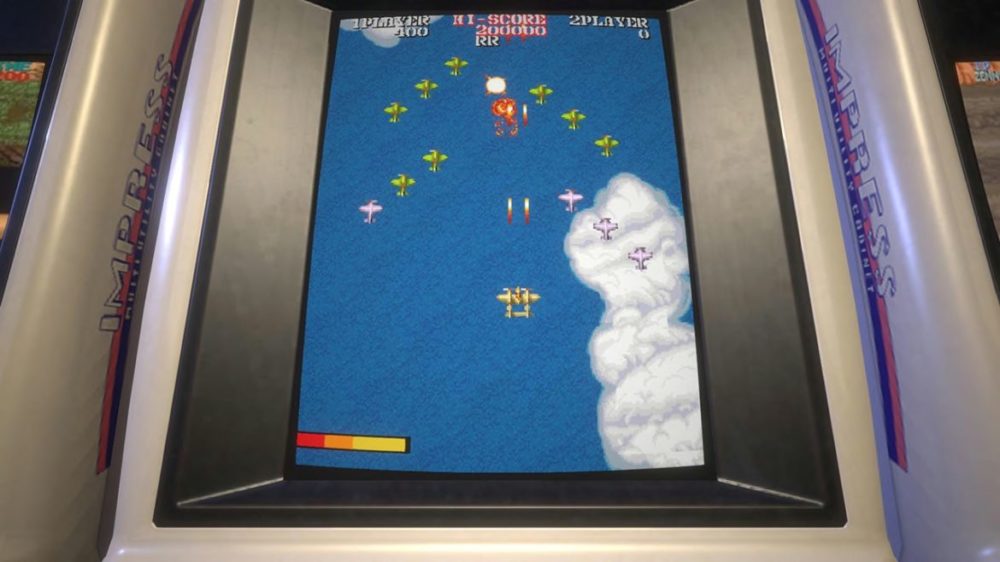
The game offers graphical filters and effects, including an arcade cabinet overlay intended to create a “3D” effect. This mode can be visually distracting on the Switch’s portable mode, particularly in games such as 1943, where the screen becomes excessively small. Rotating the image and controls is possible, but somewhat inconvenient. The games are best experienced on a large television with the correct aspect ratio (avoiding stretching to 16:9). Customization options include CRT emulation with curved edges and the addition of colorful borders.
Local co-op for 2-4 players is supported depending on the title, but the absence of online multiplayer is a significant omission, given the relatively low processing demands of the games. Online co-op would have been a valuable addition, particularly during current circumstances.
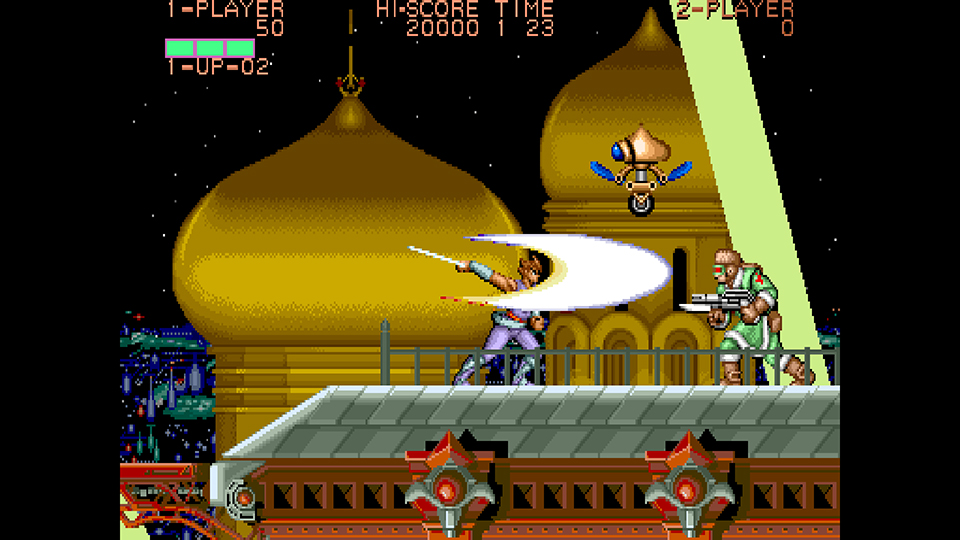
Capcom Arcade Stadium undoubtedly represents a tribute to retro gamers and arcade enthusiasts. Its appeal to players unfamiliar with these classic titles is less certain. Side-scrolling arcade games, with their inherent limitations, may feel repetitive to modern audiences. The experience largely revolves around recapturing the atmosphere of the arcade hall, bowling alley, or local video store, with limited funds and the desire to play a quick session. Contemporary gaming platforms offer vastly superior experiences in terms of presentation, scope, gameplay, and variety.
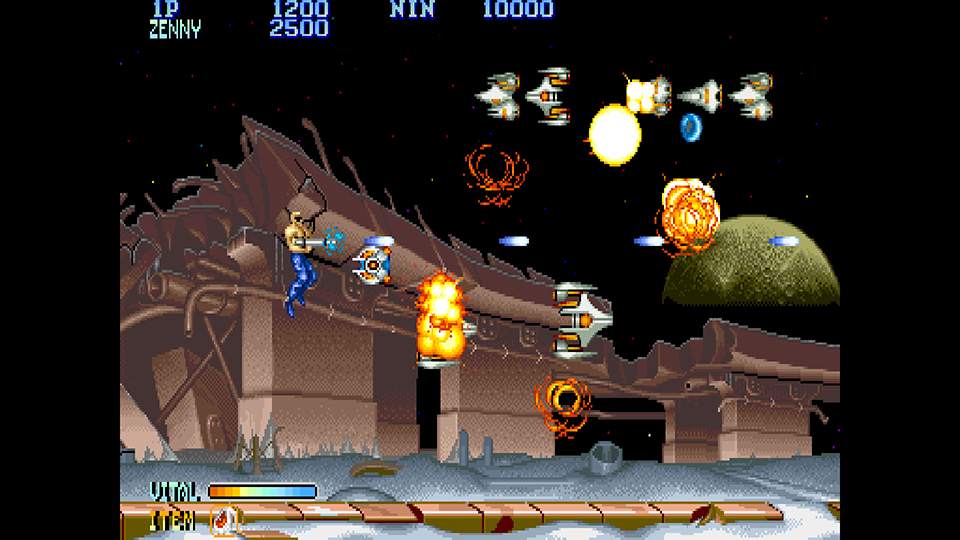
However, for those who experienced the original arcade era or owned a Commodore 64, Amiga 500, Atari ST, SNES, or Mega Drive, downloading the base program and sampling familiar classics is recommended. Games like Forgotten Worlds and Street Fighter 2 arguably surpass their home console counterparts of the time.
